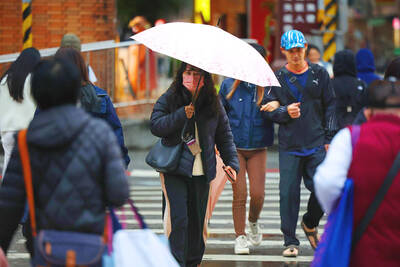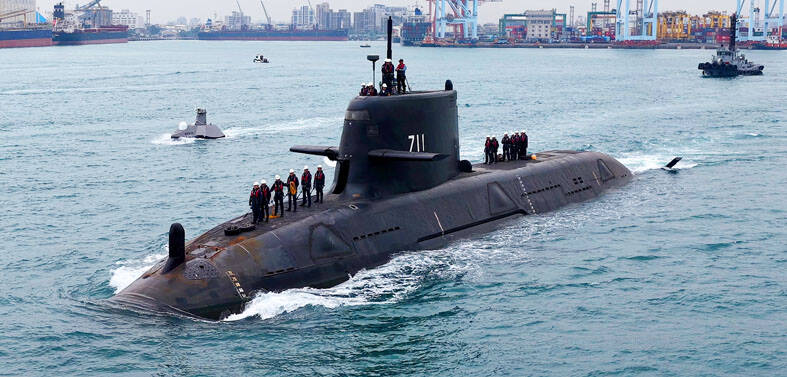Regular cross-strait flights were officially launched yesterday, with several services experiencing low occupancy rates.
“The occupancy rates on flights to Chinese airports that have just begun to offer cross-strait flight services are low,” said Civil Aeronautics Administration (CAA) director-general Lee Lung-wen (李龍文).
Lee said that five domestic airlines had lowered ticket prices as per the CAA’s request. The number of regular tickets bought online dropped by between 3 percent and 20 percent compared with charter flights.
However, Lee said that regular flights to Shanghai could only drop by about 1 percent because the Chinese government has capped the number of cross-strait flights departing and landing in the city.
Yesterday, both China Airlines (CAL,中華航空) and EVA Airways (EVA, 長榮航空) operated 10 and nine cross-strait flights respectively. EVA’s flights to Shanghai had an occupancy rate of 98 percent. Flights to Ningbo and Qingdao also had more than 80 percent of seats filled.
CAL’s flights to Beijing and Shanghai were also packed. Its new services to Ningbo, Zhengzhou and Xian also had 90 percent seat occupancy.
Flights to Xiamen and Guangzhou dispatched by both airlines had around 60 percent to 70 percent occupancy.
China Southern Airlines dispatched six flights from Guangzhou, Shanghai, Guiyang, Guilin, Shenyang and Zhengzhou.
Airlines in China and Taiwan decided last week not to hold any inauguration ceremonies or festive events to celebrate the launch of regular cros=s-strait flight services because they considered it would be inappropriate in the aftermath of Typhoon Morakot.
In related news, some travel industry representatives yesterday expressed concern that the visit of the Dalai Lama might affect numbers of Chinese tourists.
Roget Hsu (?y), secretary-general of the Travel Agent Association, said that the nation receives an average of 1,000 applications per day for the entry of Chinese tourists, about 50 percent less than the industry had hoped.
“Aside from the disaster caused by Typhoon Morakot, and H1N1, the Dalai Lama’s visit might have an impact on the market,” Hsu said.

SHIPS, TRAINS AND AUTOMOBILES: The ministry has announced changes to varied transportation industries taking effect soon, with a number of effects for passengers Beginning next month, the post office is canceling signature upon delivery and written inquiry services for international registered small packets in accordance with the new policy of the Universal Postal Union, the Ministry of Transportation and Communications said yesterday. The new policy does not apply to packets that are to be delivered to China, the ministry said. Senders of international registered small packets would receive a NT$10 rebate on postage if the packets are sent from Jan. 1 to March 31, it added. The ministry said that three other policies are also scheduled to take effect next month. International cruise ship operators

NUMBERS IMBALANCE: More than 4 million Taiwanese have visited China this year, while only about half a million Chinese have visited here Beijing has yet to respond to Taiwan’s requests for negotiation over matters related to the recovery of cross-strait tourism, the Tourism Administration said yesterday. Taiwan’s tourism authority issued the statement after Chinese-language daily the China Times reported yesterday that the government’s policy of banning group tours to China does not stop Taiwanese from visiting the country. As of October, more than 4.2 million had traveled to China this year, exceeding last year. Beijing estimated the number of Taiwanese tourists in China could reach 4.5 million this year. By contrast, only 500,000 Chinese tourists are expected in Taiwan, the report said. The report

Temperatures are forecast to drop steadily as a continental cold air mass moves across Taiwan, with some areas also likely to see heavy rainfall, the Central Weather Administration (CWA) said. From today through early tomorrow, a cold air mass would keep temperatures low across central and northern Taiwan, and the eastern half of Taiwan proper, with isolated brief showers forecast along Keelung’s north coast, Taipei and New Taipei City’s mountainous areas and eastern Taiwan, it said. Lows of 11°C to 15°C are forecast in central and northern Taiwan, Yilan County, and the outlying Kinmen and Lienchiang (Matsu) counties, and 14°C to 17°C

STEERING FAILURE: The first boat of its class is experiencing teething issues as it readies for acceptance by the navy, according to a recent story about rudder failure The Hai Kun (海鯤), the nation’s first locally built submarine, allegedly suffered a total failure of stern hydraulic systems during the second round of sea acceptance trials on June 26, and sailors were forced to manually operate the X-rudder to turn the submarine and return to port, news Web site Mirror Daily reported yesterday. The report said that tugboats following the Hai Kun assisted the submarine in avoiding collisions with other ships due to the X-rudder malfunctioning. At the time of the report, the submarine had completed its trials and was scheduled to begin diving and surfacing tests in shallow areas. The X-rudder,